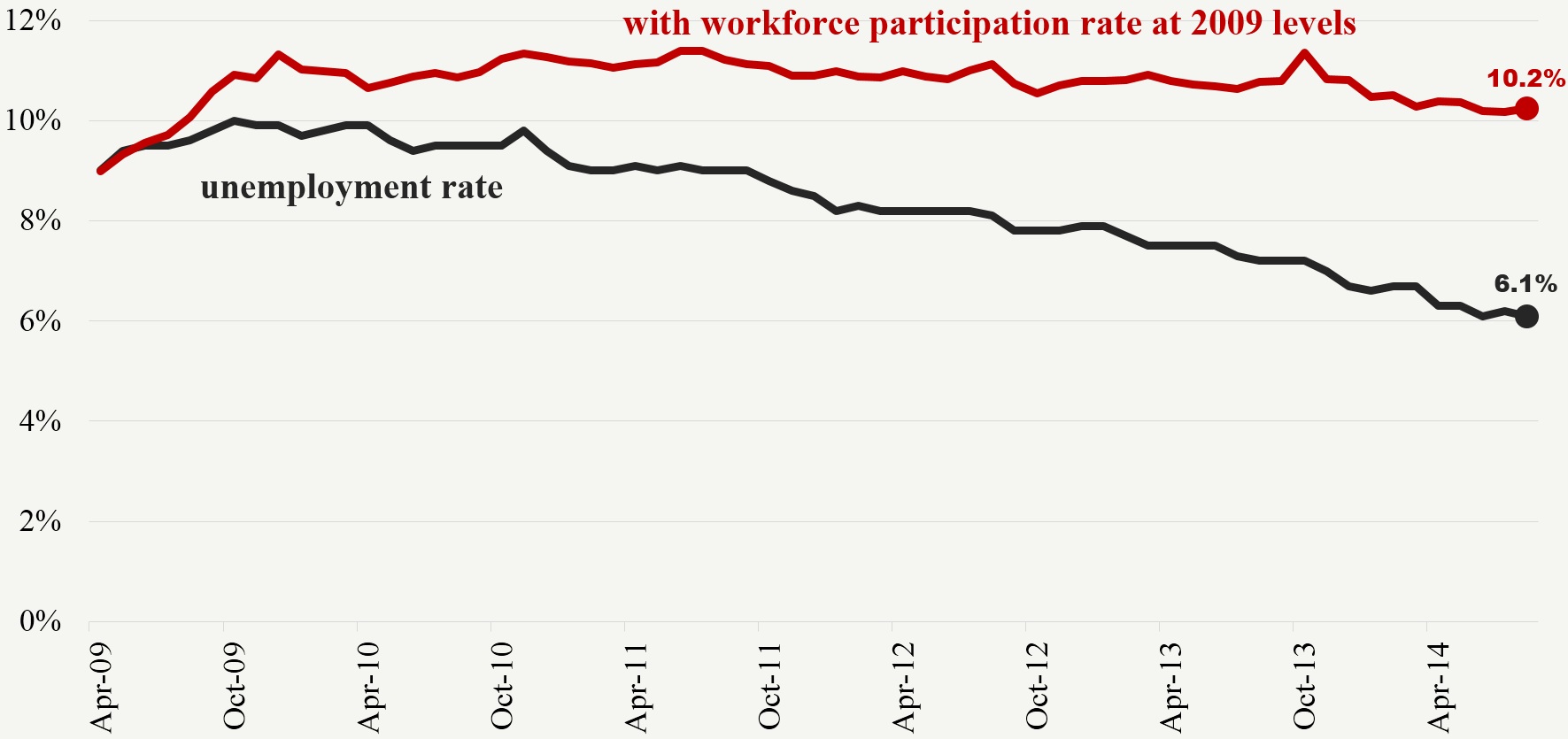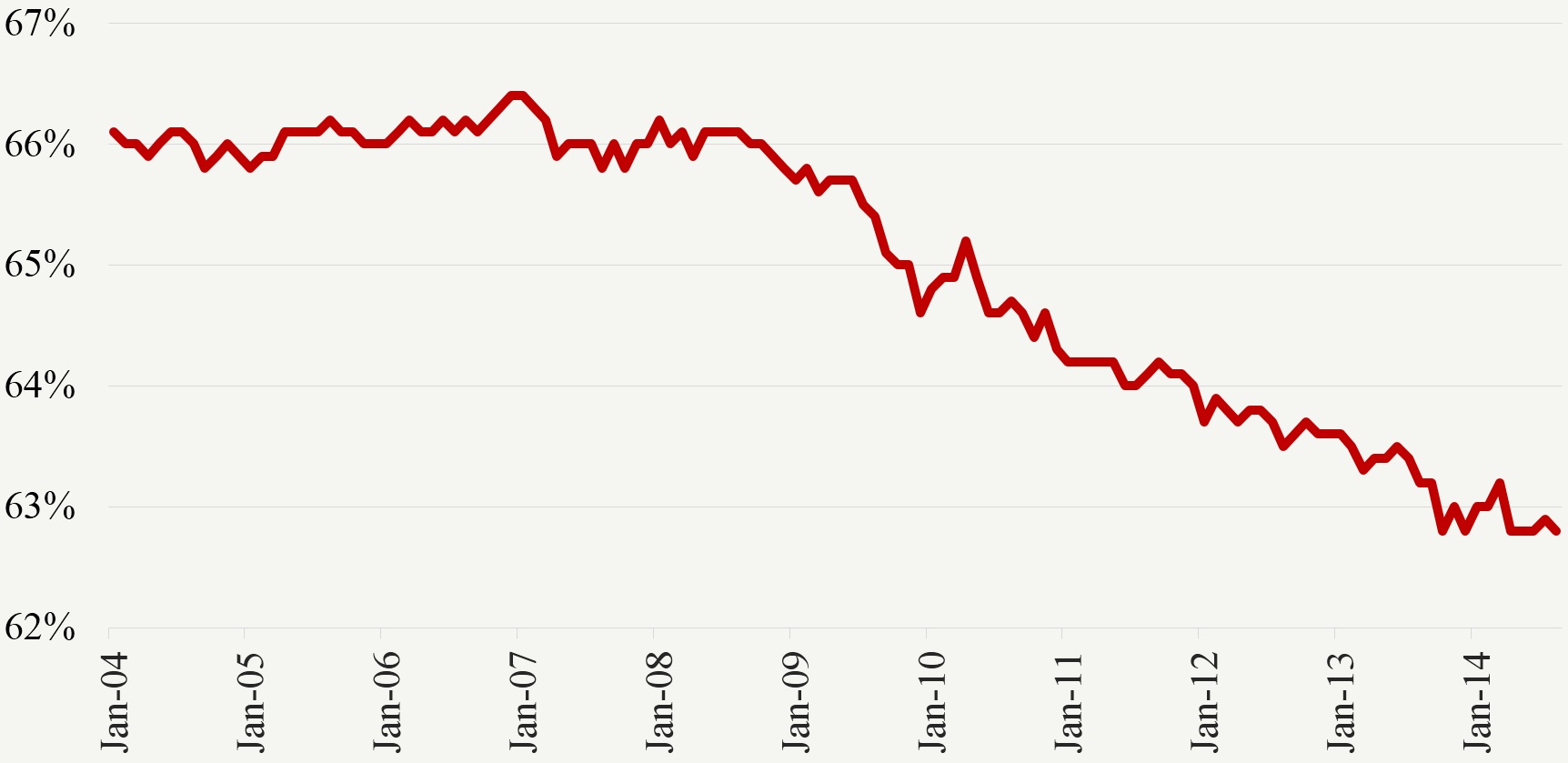Jobs Report Disappoints
In the face of a disappointing jobs report last Friday, the Obama administration tried to spin the “progress” our economy has made since the recession ended more than five years ago. Any reasonable look at the data shows that our economy continues to lag and millions of Americans are still struggling to find work.
Employment and Unemployment
The Department of Labor reported an unemployment rate of 6.1 percent for August 2014, a decrease of 0.1 percentage point. It reported an increase of 142,000 nonfarm jobs over the previous month. Economists surveyed by the Wall Street Journal had anticipated job growth of 225,000. The August job creation figure is much smaller than the average monthly gain of 212,000 over the prior 12 months.
Unemployment Decline Is Due to Lower Workforce Participation

Source: Joint Economic Committee Republican staff
The number of unemployed people in August was 9.6 million, a slight decrease from July’s figure of 9.7 million. The unemployment rate for teenagers age 16-19 is 19.6 percent. It is 11.4 percent for African Americans and 7.5 percent for Hispanics. The “real” number of unemployed Americans is 19.0 million. These are people who are unemployed (9.6 million), want work but have stopped searching for a job (2.1 million), or are working part time because they cannot find full time employment (7.3 million). The “real” unemployment, or U-6, rate is 12.0 percent, down 0.2 percentage point from July.
In August, there were 2.1 million “discouraged workers.” Among these workers are 775,000 who have stopped looking for employment, believing no work is available. This is up from 741,000 last month.
Labor Force Participation Remains at Record Low
The labor force participation rate is 62.8 percent, a decline of 0.1 percentage point from the previous two months and remaining near the lowest level in 36 years. Labor force participation is down 0.5 percentage point year-over-year.
Labor Force Participation Rate Has Nosedived

Source: BLS
The decline in labor force participation masks the real unemployment situation. If the labor force participation rate were the same as when President Obama took office, the unemployment rate would be 10.2 percent.
The share of American adults with jobs in August was 59.0 percent, an increase of 0.3 percentage point year-over-year, and little changed for the last five months. This is more than four percentage points below its pre-recession peak.
The number of long-term unemployed (those unemployed for 27 weeks or longer) is now three million Americans. This represents 31.2 percent of unemployed people. During the 1980s, when our country faced a similar recessionary period, the proportion of long-term unemployed never exceeded 27 percent.
Federal Reserve Chair Janet Yellen has expressed concern with the consistent number of Americans working part-time for economic reasons – because they cannot find a full-time position or their hours have been cut back. In August this amounted to 7.3 million people.
An analysis by the Federal Reserve Bank of Atlanta released on July 18 found that 25 of 36 industries have seen a decline in the share of involuntary part-time workers. The report said: “While overall there has been a fairly widespread (but modest) recent improvement in the situation, the percent of the workforce working part-time for economic reasons remains elevated compared with 2007 for all industries.”
Lack of Wage Growth Raises Concerns
The Federal Reserve Board of Governors is scheduled to meet September 16-17. A key part of the Fed’s monetary policy discussions has been improving labor markets. Despite a decline in the unemployment rate, economists remain concerned with the stagnant growth in wages.
Average hourly earnings for all employees on private nonfarm payrolls rose by six cents to $24.53 in August. Average hourly earnings have risen by 2.1 percent year-over-year. August was the 61st straight month that year-over-year hourly wage growth has been below 2.5 percent. Prior to the recession, wage growth routinely exceeded three percent.
Next Article Previous Article
